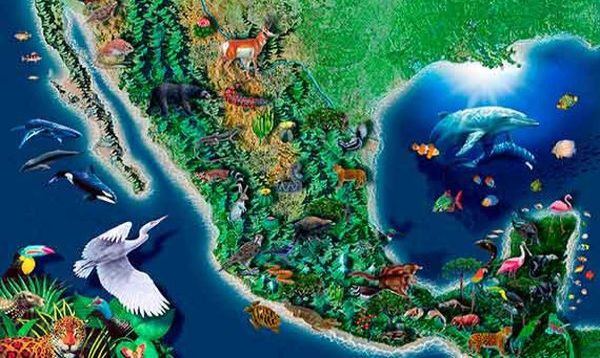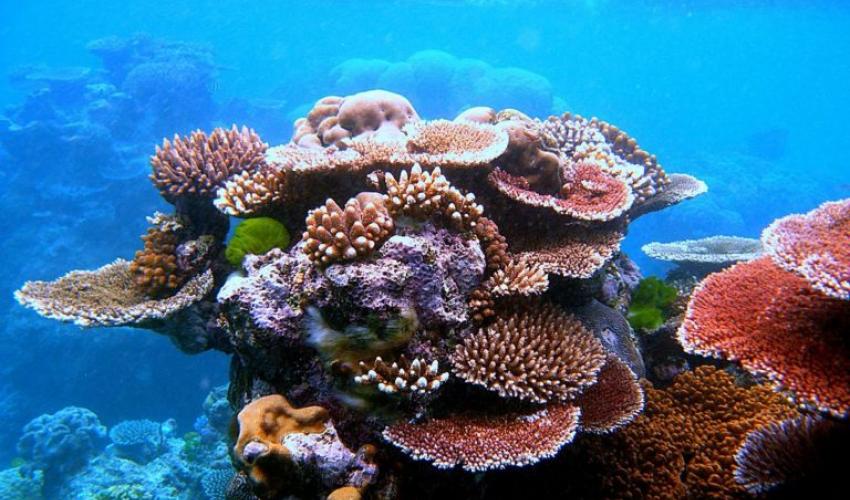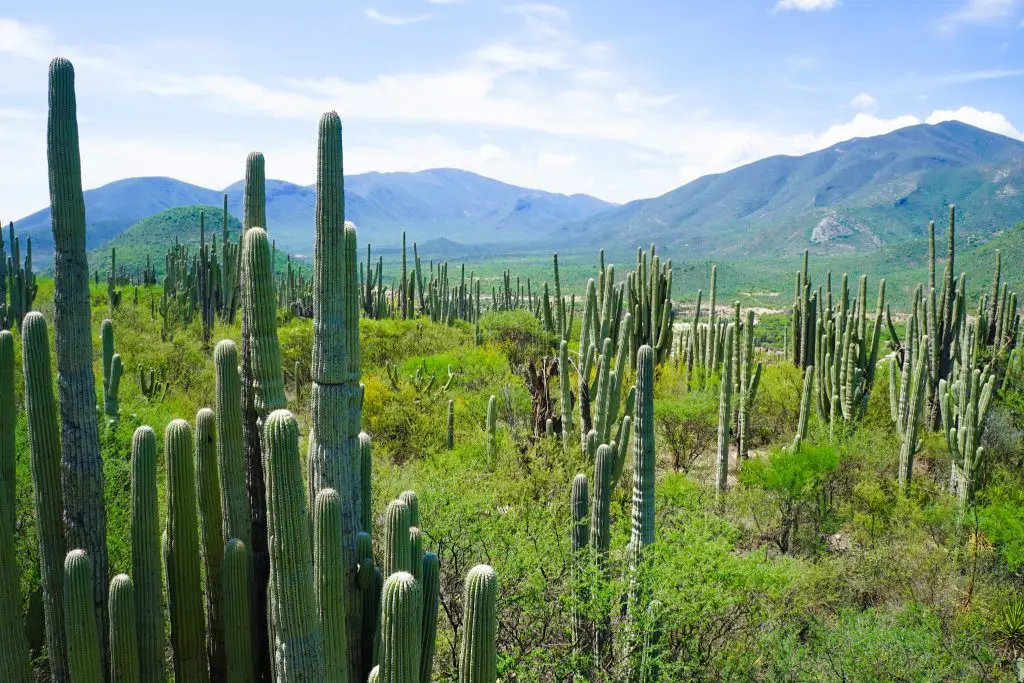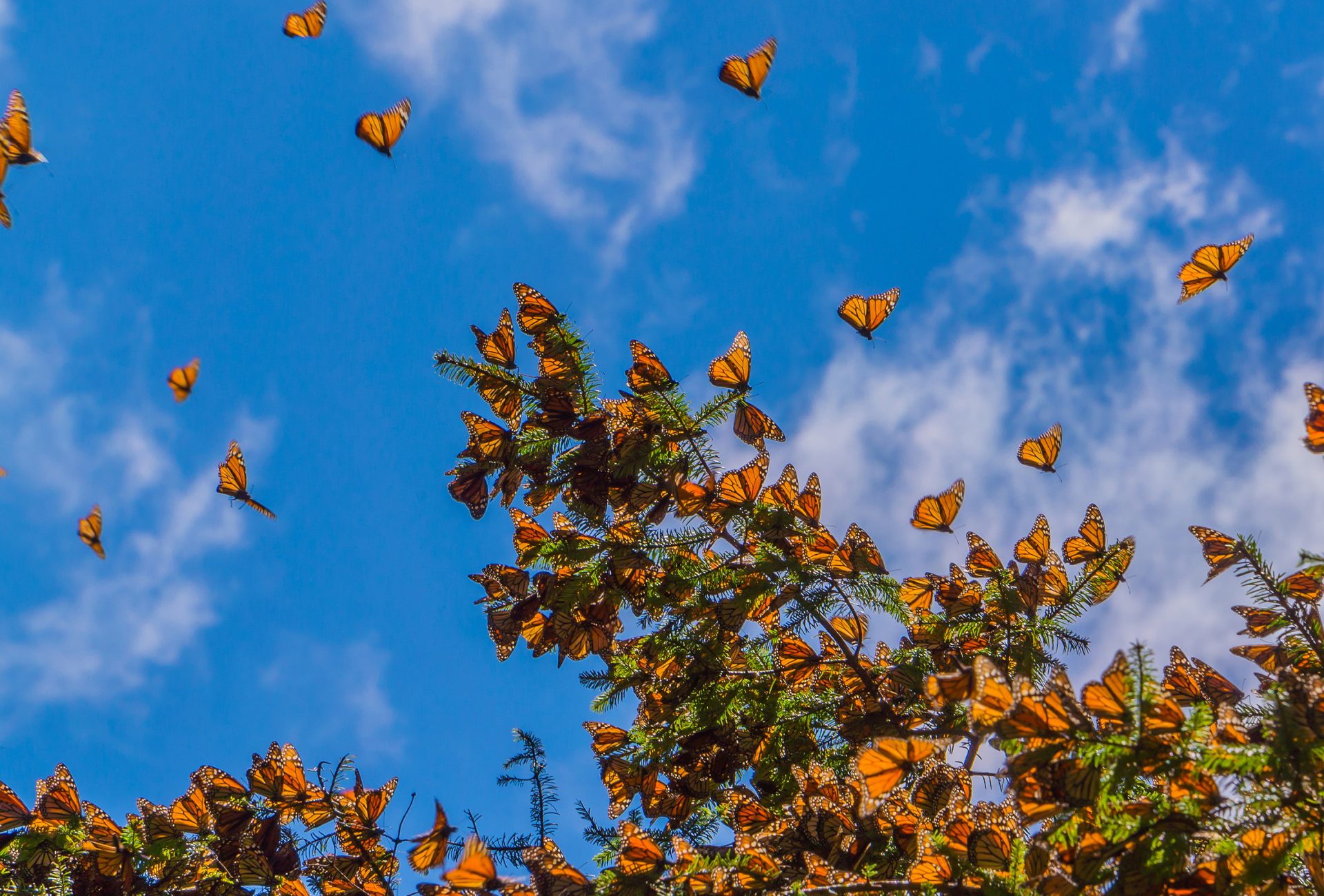Have you ever wondered why Mexico is such a popular destination for travelers? Well, one reason is its unique biodiversity. Mexico is home to a wide range of flora and fauna that you won’t find anywhere else in the world. From tropical rainforests to arid deserts, this country has it all. In this article, we’ll explore Mexico’s rich natural heritage and learn about the fascinating plants and animals that call this place home. So, get ready to discover the wonders of Mexico’s unique biodiversity!
When it comes to tourism, Mexico has so much to offer. Whether you’re interested in exploring ancient ruins, relaxing on pristine beaches, or experiencing vibrant culture, this country has it all. But what sets Mexico apart from other destinations is its incredible biodiversity. From the mountains of Chiapas to the coral reefs of the Yucatan Peninsula, Mexico is a haven for nature lovers. In the coming paragraphs, we’ll delve deeper into the diverse ecosystems that exist in Mexico and the remarkable species that inhabit them. So, if you’re curious to learn more about Mexico’s extraordinary flora and fauna, keep reading!

Mexico’s Biodiversity: An Overview
Mexico, with its diverse landscapes and vibrant ecosystems, is home to a rich array of flora and fauna. From the lush tropical rainforests to the arid deserts, Mexico’s natural beauty is awe-inspiring. This article takes you on a journey through Mexico’s unique biodiversity, exploring the flora and fauna, as well as the endemic species that make this country a true treasure trove for nature lovers.
Flora: A Colorful Tapestry
The Unique Characteristics of Mexican Flora
Mexico boasts an incredibly diverse flora, with over 26,000 known species of plants. The country’s unique geography, which includes mountains, deserts, and coastal areas, creates a wide range of habitats that support a myriad of plant life. From towering trees to delicate flowers, Mexican flora exhibits an extraordinary range of shapes, sizes, and colors.
Exploring the Tropical Rainforests
The tropical rainforests of Mexico are a sight to behold. These lush and dense forests are home to an abundance of plant species, including towering hardwood trees, thick undergrowth, and vibrant epiphytes. One such rainforest is the Selva Lacandona in Chiapas, known for its impressive biodiversity and untouched beauty. As you immerse yourself in these enchanting rainforests, you’ll be surrounded by a symphony of chirping birds and the fragrant scent of blooming flowers.
Diverse Cacti and Succulents of Mexico
Mexico is renowned for its diverse array of cacti and succulents, adapted to survive the harsh desert conditions. From the towering saguaro cactus to the petite prickly pear, these unique plants have evolved fascinating adaptations to conserve water and thrive in arid environments. Exploring the Mexican deserts, such as the Chihuahuan Desert or the Sonoran Desert, allows you to witness the resilience and beauty of these remarkable plants.
Enchanting Orchids and Other Flowering Plants
Mexico is a haven for orchid enthusiasts, as it houses around 4,500 species of orchids, making it one of the richest countries in terms of orchid diversity. These elegant and delicate flowers come in a variety of colors and shapes, captivating anyone who admires them. In addition to orchids, Mexico is also home to a plethora of other flowering plants, including vibrant bougainvillea, striking heliconias, and fragrant jasmine.
The Magical Agave and Its Endless Uses
No discussion of Mexican flora would be complete without mentioning the iconic agave plant. This versatile plant has been an integral part of Mexican culture for centuries, serving as a source of food, fiber, and medicine. The agave is also used to produce the world-famous Mexican tequila and mezcal. Set foot in the agave fields of Jalisco or Oaxaca, and you will witness the cultural and economic significance of this magical plant.

Fauna: A Paradise for Animal Lovers
The Extraordinary Wildlife of Mexico
Mexico is teeming with an incredible diversity of wildlife. From elusive big cats to majestic marine creatures, the country is a paradise for animal lovers. With over 1,000 bird species, 400 mammal species, and 700 reptile species, Mexico offers a cornucopia of opportunities to encounter unique and fascinating creatures in their natural habitats.
Magnificent Mammals of Mexico
Mexico is home to a wide range of mammal species, each with its own distinct behaviors and habitats. The jaguar, Mexico’s largest feline predator, roams the jungles of the Yucatan Peninsula, while the gray whale migrates thousands of kilometers to the waters of Baja California. Other notable mammal species include the adorable tapir, the endearing spider monkey, and the elusive ocelot.
Reptiles and Amphibians: A Closer Look
Mexico is a haven for reptile and amphibian enthusiasts, housing a staggering number of species. From the vibrant poison dart frogs found in the tropical rainforests to the ancient and awe-inspiring sea turtles nesting along Mexico’s coasts, these cold-blooded creatures captivate both scientists and nature enthusiasts alike. The Mexican beaded lizard and the Morelet’s crocodile are just a few examples of the reptilian wonders awaiting discovery.
Awe-inspiring Bird Species in Mexico
Mexico is a birdwatcher’s paradise with a vast array of bird species found throughout the country. Whether you’re exploring the mangroves of the Yucatan Peninsula or hiking in the Sierra Madre Occidental, you’ll encounter colorful toucans, graceful hummingbirds, and magnificent birds of prey. Keep your eyes peeled for the resplendent quetzal, a symbol of beauty and freedom in Mexican culture.
The Underwater Wonderland: Marine Life
Mexico’s coastal waters are a playground for marine life, attracting divers and snorkelers from around the world. The Mesoamerican Barrier Reef, the second-largest barrier reef system in the world, is a haven for colorful fish, pristine coral reefs, and magnificent marine mammals. From swimming with whale sharks in the turquoise waters of Cancun to witnessing the annual sea turtle nesting in the Pacific coast, Mexico’s marine life offers a glimpse into a world of wonder beneath the waves.
Endemic Species: Treasures of Mexico
Understanding Endemism
Endemism refers to the occurrence of species that are unique to a particular geographic location and are not found anywhere else in the world. Mexico is celebrated for its wealth of endemic species, both flora and fauna, making it a crucial hotspot for biodiversity conservation.
Endemic Flora of Mexico
Mexico is home to a remarkable number of endemic plant species. Some notable examples include the Mexican silversword, a striking succulent found only in the mountains of central Mexico, and the peyote cactus, which has profound cultural and spiritual significance to indigenous communities. These endemic plants contribute to the country’s distinct ecosystems and play a vital role in maintaining biodiversity.
Endemic Fauna of Mexico
Mexico’s endemic fauna includes a wide range of species, each with its own unique adaptations and ecological niche. The Mexican walking fish, also known as the axolotl, is a prime example. This enigmatic amphibian, found exclusively in the lakes of Xochimilco, possesses the remarkable ability to regenerate its limbs, making it a subject of fascination to scientists and a symbol of Mexico’s biodiversity.
Conservation Efforts and Challenges
Despite Mexico’s efforts to conserve its biodiversity, the country faces numerous challenges in protecting its endemic species. Habitat destruction, invasive species, illegal wildlife trade, climate change, and pollution are all contributing factors that threaten the survival of Mexico’s unique flora and fauna. However, through the collective efforts of government initiatives, community-led conservation projects, and international collaborations, there is hope for preserving these treasures for future generations.

The Biodiversity Hotspots of Mexico
Explore the Sierra Madre Occidental
The Sierra Madre Occidental, a mountain range stretching across western Mexico, is a biodiversity hotspot worth exploring. Home to lush pine-oak forests, sprawling grasslands, and diverse ecosystems, this region boasts an incredible wealth of flora and fauna. Trek through the Copper Canyon, one of Mexico’s natural wonders, and you’ll be rewarded with breathtaking views and encounters with rare and endemic species.
The Mesmerizing Yucatan Peninsula
The Yucatan Peninsula is a captivating region that showcases the country’s tropical beauty in its full splendor. Beyond its stunning beaches and iconic archaeological sites, the peninsula is home to a diverse array of ecosystems, including coastal wetlands, mangroves, and ancient cenotes. Explore the Sian Ka’an Biosphere Reserve, a UNESCO World Heritage site, and you’ll be immersed in the wonders of the Maya Forest, encountering elusive jaguars, colorful birds, and vibrant orchids.
The Majestic Sierra Madre Oriental
The Sierra Madre Oriental, extending from the northeastern corner of Mexico to the south-central region, is a haven for wildlife and an ecological treasure trove. From cloud forests nestled in the mountains to vast expanses of oak-pine forests, this region boasts an impressive variety of habitats. Take a hike through the Sierra Gorda Biosphere Reserve, and you’ll be rewarded with encounters with rare mammals such as the black bear and the Mexican long-nosed bat.
Discover the Unique Species of Baja California
Baja California Sur, located in northwestern Mexico, is a truly unique region where the desert meets the sea. This rugged peninsula is home to a plethora of endemic species, such as the Baja California rock squirrel and the Belding’s yellowthroat. Dive into the crystal-clear waters of the Sea of Cortez, and you’ll discover a world teeming with marine life, including playful sea lions, majestic whale sharks, and colorful coral reefs.
The Tranquil Mayan Biosphere Reserve
Nestled in the heart of the Yucatan Peninsula, the Mayan Biosphere Reserve is a sanctuary for both cultural heritage and biodiversity. This vast protected area houses diverse ecosystems, including dense jungles, wetlands, and ancient Mayan ruins. Embark on a journey through this tranquil reserve, and you’ll witness the magnificent resplendent quetzal, elusive jaguars, and the fascinating symbiotic relationship between the tropical forest and the indigenous communities.
The Role of Biodiversity in Mexico’s Ecosystems
The Interdependence of Species
Biodiversity is critical to the health and stability of ecosystems, and Mexico’s diverse flora and fauna play essential roles in maintaining ecological balance. From pollination by bees and butterflies to the regulation of pests by birds and reptiles, each species has its own niche and contributes to the overall functioning of the ecosystem.
Ecosystem Services Provided by Biodiversity
Biodiversity provides invaluable ecosystem services that sustain human life and well-being. Forests purify air and water, wetlands regulate floods and provide habitats for countless species, and coral reefs protect coastlines from erosion and support a myriad of marine life. Recognizing these services is crucial for ensuring the conservation and sustainable use of Mexico’s biodiversity.
The Impact of Biodiversity Loss
The loss of biodiversity poses significant threats to both ecological and human systems. Mexico, like many countries, faces the consequences of deforestation, habitat degradation, and species extinction. The disappearance of keystone species can have cascading effects throughout the food chain, leading to ecosystem collapse and the loss of vital resources for local communities.
Conserving Biodiversity for Future Generations
Conserving Mexico’s biodiversity requires a holistic and integrated approach that involves stakeholder collaboration, sustainable land-use practices, and effective protected area management. By promoting awareness, education, and sustainable practices, we can strive to protect and preserve Mexico’s unique biodiversity for future generations to enjoy.

Indigenous Knowledge and Biodiversity
Traditional Ecological Knowledge in Mexico
Indigenous communities in Mexico have a deep understanding of their surrounding ecosystems and possess valuable traditional ecological knowledge. They have developed sustainable practices that have allowed them to coexist harmoniously with nature for centuries. The preservation and integration of this knowledge are crucial for effective biodiversity conservation in Mexico.
Ethnobotany: Cultural Significance of Plants
Ethnobotany, the study of how indigenous cultures use plants for medicinal, food, and cultural purposes, is deeply intertwined with Mexico’s biodiversity. From traditional healing practices that utilize medicinal plants to the rich culinary traditions that incorporate local ingredients, plants have profound cultural significance in Mexico. Recognizing and respecting these cultural practices is vital for the conservation of both plants and the cultures that depend on them.
Traditional Practices for Sustainable Use of Natural Resources
Indigenous communities in Mexico have long practiced sustainable use of natural resources, relying on their intricate knowledge of local ecosystems. Practices such as rotational agriculture, forest management, and community-based conservation have proven effective in promoting ecological resilience and maintaining biodiversity. By supporting these traditional practices, we can learn from indigenous wisdom and contribute to the sustainable use of Mexico’s natural resources.
Threats to Mexico’s Biodiversity
Habitat Destruction and Fragmentation
Habitat destruction and fragmentation due to urbanization, deforestation, and agricultural expansion are major threats to Mexico’s biodiversity. The loss of natural habitats disrupts ecosystems, displacing species and reducing biodiversity. Efforts to combat habitat destruction include promoting sustainable land-use practices, expanding protected areas, and restoring degraded habitats.
Invasive Species: A Growing Concern
The introduction of invasive species, both plant and animal, poses a significant threat to Mexico’s native flora and fauna. Invasive species often outcompete native species for resources, disrupt natural ecosystems, and can lead to the decline or extinction of native species. Controlling and preventing the spread of invasive species is crucial for protecting Mexico’s unique and delicate biodiversity.
Illegal Wildlife Trade
Mexico is a hotspot for illegal wildlife trade due to its rich biodiversity and proximity to international markets. The trafficking of endangered species, such as exotic birds, reptiles, and marine life, poses a severe threat to their survival. Strengthening law enforcement, raising awareness, and supporting community-led conservation initiatives are key strategies to combat this illicit trade.
Climate Change and its Impacts
Climate change poses a significant threat to Mexico’s biodiversity, affecting ecosystems, species distribution, and migration patterns. Rising temperatures, changing rainfall patterns, and extreme weather events can disrupt delicate ecological balances and jeopardize the survival of species already facing threats. Mitigating climate change through sustainable practices and reducing greenhouse gas emissions is crucial for the long-term preservation of Mexico’s biodiversity.
Pollution and Contamination
Pollution, including water pollution, air pollution, and soil contamination, poses a significant risk to Mexico’s biodiversity. Industrial activities, agricultural practices, and improper waste disposal can introduce toxins into ecosystems, harming both flora and fauna. Implementing strict environmental regulations, promoting sustainable practices, and raising awareness about the impacts of pollution are necessary steps in protecting Mexico’s precious biodiversity.

Conservation Initiatives in Mexico
Protected Areas and National Parks
Mexico has made significant efforts to establish protected areas and national parks to preserve its biodiversity. These areas not only safeguard habitats and species, but also offer opportunities for research, recreation, and eco-tourism. From the iconic Monarch Butterfly Biosphere Reserve to the stunning Sumidero Canyon National Park, these protected areas play a vital role in Mexico’s biodiversity conservation.
Community-led Conservation Projects
Community-led conservation projects empower local communities to actively participate in the protection of their natural resources. By involving residents in decision-making processes and offering alternative livelihood opportunities, these initiatives foster a sense of ownership and pride in protecting Mexico’s biodiversity. Projects such as the Community Forest Guardians in the Lacandon Jungle and the Sea Turtle Conservation Program in Baja California are excellent examples of community-led conservation in action.
Government Policies and Regulations
The Mexican government has implemented policies and regulations to protect its biodiversity and natural resources. These include environmental impact assessments, land-use regulations, and the enforcement of protected areas. By strengthening legislation, promoting sustainable practices, and investing in conservation efforts, the government plays a crucial role in preserving Mexico’s unique biodiversity.
International Collaborations
International collaborations and partnerships are essential for addressing transboundary conservation challenges and promoting best practices in biodiversity conservation. Mexico actively works with international organizations, such as the United Nations Environment Programme and the World Wildlife Fund, to strengthen its conservation efforts and share experiences and knowledge with other countries facing similar challenges.
Benefits of Ecotourism and Sustainable Travel
Promoting Conservation Through Tourism
Ecotourism and sustainable travel provide vital support for biodiversity conservation in Mexico. By choosing eco-friendly accommodations, participating in responsible wildlife tourism, and engaging in educational activities, travelers can directly contribute to conservation initiatives. Sustainable tourism not only provides economic incentives for local communities to protect their natural resources but also raises awareness about the importance of biodiversity conservation.
Community Empowerment and Socioeconomic Benefits
Ecotourism and sustainable travel can empower local communities by offering alternative livelihood opportunities and promoting cultural heritage. By involving community members in tourism activities, Mexico’s biodiversity becomes a valuable asset to be preserved, rather than exploited. Sustainable travel also generates economic benefits, supporting local businesses and job creation, while preserving the diverse traditions and customs of indigenous communities.
Preserving Cultural Heritage
Mexico’s biodiversity is intricately linked to the country’s rich cultural heritage. Traditional practices, arts, and rituals are deeply intertwined with the natural environment. By promoting sustainable travel that respects cultural traditions and supports local artisans, Mexico’s cultural heritage is preserved and celebrated alongside its unique biodiversity.
Best Practices for Responsible Travel
To ensure your travel has a positive impact on Mexico’s biodiversity, practice responsible and sustainable travel habits. Respect wildlife and their habitats by observing animals from a safe distance and following designated trails. Support local conservation initiatives, purchase sustainable and ethically made souvenirs, and minimize your ecological footprint by practicing waste reduction and responsible energy usage. By being a responsible traveler, you can contribute to the preservation of Mexico’s incredible biodiversity.
Education and Awareness: Inspiring Change
Environmental Education in Schools
Education plays a crucial role in raising awareness about the importance of biodiversity conservation. By integrating environmental education into school curricula, children develop an understanding of their roles as stewards of the environment. Through lessons, field trips, and hands-on activities, young minds are inspired to cherish and protect Mexico’s unique biodiversity.
Public Awareness Campaigns
Public awareness campaigns are vital in fostering a sense of responsibility and inspiring action to safeguard Mexico’s biodiversity. These campaigns can include social media outreach, workshops, and public events that highlight the value of biodiversity and the need for conservation. By raising awareness about the threats to biodiversity and the actions individuals can take, these campaigns drive positive change.
Engaging Local Communities
Engaging local communities is key to successful biodiversity conservation. Encouraging participation in citizen science projects, organizing community clean-up initiatives, and providing training on sustainable practices are just a few ways to involve local residents in conservation efforts. By recognizing the invaluable knowledge and experiences of indigenous communities, their voices are amplified, and their contributions to biodiversity conservation are valued.
Youth Initiatives for Biodiversity Conservation
Youth initiatives have the power to drive change and inspire a new generation of conservationists. Programs such as youth-led conservation clubs, environmental youth conferences, and leadership training empower young individuals to take an active role in protecting Mexico’s biodiversity. By providing opportunities for youth to engage in hands-on conservation activities, their passion and commitment serve as catalysts for a more sustainable future.
Scientific Research and Discoveries
Exploring Uncharted Territories
Mexico’s biodiversity offers endless opportunities for scientific exploration and discovery. From the depths of underwater caves to the unexplored corners of dense jungles, there are still many species awaiting discovery. Scientists and researchers continuously uncover new insights into Mexico’s biodiversity, helping to inform conservation efforts and develop sustainable practices.
New Species Discoveries
Through scientific research, new species continue to be discovered in Mexico’s rich ecosystems. In recent years, new species of plants, insects, reptiles, and even mammals have been identified and described by scientists. These discoveries contribute not only to our understanding of Mexico’s biodiversity but also to global knowledge of species distribution and evolution.
Genetic Research and Conservation
Genetics plays a crucial role in biodiversity conservation, helping scientists understand the genetic diversity and adaptability of species. Genetic research allows for the identification of vulnerable populations, the development of breeding programs for endangered species, and the preservation of genetic material through seed banks and cryopreservation. These efforts ensure the long-term survival of Mexico’s unique species.
Technology and Monitoring
Advancements in technology, such as remote sensing and DNA barcoding, have revolutionized biodiversity monitoring and conservation efforts. Satellite imagery provides insights into habitat loss and land-use changes, while DNA barcoding allows for rapid identification of species. These technological tools enable scientists and conservationists to make informed decisions and track changes in Mexico’s biodiversity over time.
Success Stories in Biodiversity Conservation
Species Recovery and Population Growth
Thanks to sustained conservation efforts, some species are making a remarkable recovery in Mexico. The California condor, once on the brink of extinction, has seen a significant increase in its population through captive breeding programs and reintroduction efforts. Similarly, the black bear population in Mexico has increased due to protected areas and reduced hunting pressures. These success stories highlight the power of conservation interventions in restoring populations and habitats.
Rehabilitation of Degraded Habitats
Efforts to rehabilitate degraded habitats have yielded positive results in Mexico. Through reforestation projects, restoration of mangroves, and the establishment of coastal protected areas, damaged ecosystems can recover, providing habitats for a wide range of species. The restoration of the Mexico City Wetland Ecological Reserve serves as an inspiring example of successful habitat rehabilitation in an urban setting.
Species Reintroduction Programs
Species reintroduction programs have played a crucial role in restoring Mexico’s biodiversity. The reintroduction of the black-footed ferret to sites in northern Mexico, where it was previously extinct, has brought this endangered species back from the brink. Reintroduction programs provide hope for the recovery of species on the verge of extinction and contribute to the preservation of Mexico’s unique biodiversity.
Local Participation in Conservation
The active participation of local communities in conservation efforts has proven instrumental in the success of biodiversity conservation projects. From protecting sea turtle nesting sites to implementing sustainable fishing practices, local residents play a vital role in preserving Mexico’s natural heritage. Programs that promote community stewardship, such as the Community Conservation Reserves in Oaxaca, empower local communities to take ownership of their natural resources and actively contribute to conservation.
Conclusion
Mexico’s unique biodiversity is a source of awe and inspiration, offering a glimpse into the wonders of the natural world. From the vibrant forests and deserts to the hidden underwater realms, Mexico teems with life, both familiar and extraordinary. As you explore Mexico’s diverse landscapes and encounter its endemic species, remember the importance of preserving this natural heritage for future generations. By celebrating and protecting Mexico’s biodiversity, you become a vital part of the collective effort to sustain the wonders of nature.